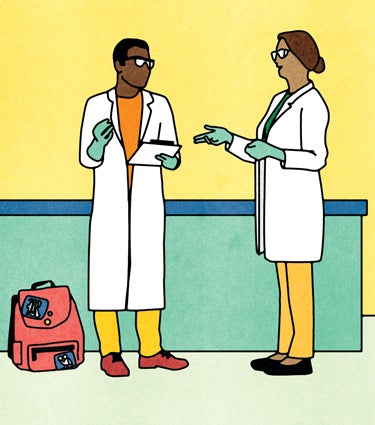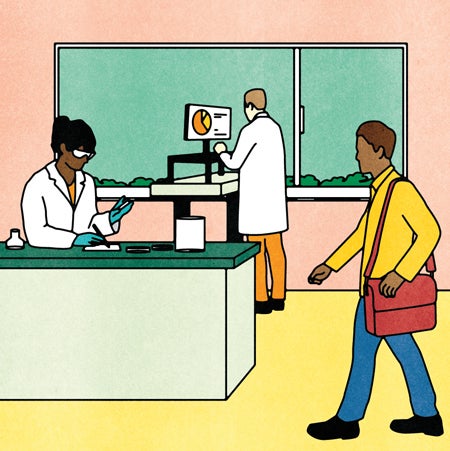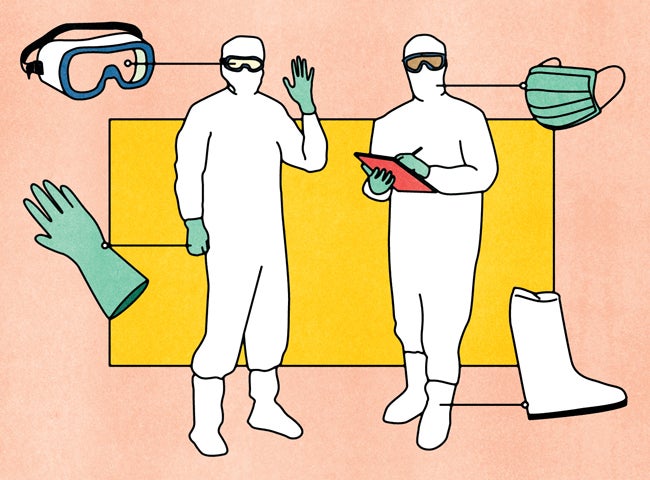Where Our Research Dollars Go
Rice’s research funding supports an ecosystem of discovery.
Spring 2025
Illustrations by Elena Lacey ’13
There is a lot of discussion in the news lately about funding for research. We worked with Rice research experts — and a talented illustrator — to help explain how funding supports our scholars in the creation of new knowledge, scientific breakthroughs and critical insights. In this issue, readers can learn about the impact of research funding across many areas of campus.
The costs of federally funded research projects can be divided into two categories — direct and indirect costs. Direct costs are costs linked to one project. Indirect costs are related to critical infrastructure and resources that help support all research projects. Indirect costs are also called facilities and administrative (F&A) costs.
Salaries, wages and benefits for researchers, staff and postdocs working on a research project
Stipends for graduate students and undergraduate students with summer research positions working on a research project
Lab equipment and research supplies specific to a research project
Any travel costs for doing research and also travel to present project findings at conferences
(Facilities and Administrative)
Facilities
Utilities, heating and cooling, operations and maintenance expenses for the building where research takes place; highly specialized research spaces, such as the clean room and animal facilities that support multiple research projects; also, depreciation on research buildings and labs
Facilities
Libraries, databases, and computing and data infrastructure integral to doing research
Administrative
General expenses and salaries for department, central office and research administrators
Administrative
General expenses, equipment and salaries for compliance and safety
The Life Cycle of a Grant
Funded research often begins with a question: What problem needs solving? Seeking funding support for a robust program of research and discovery is a complex and rigorous process.
Project idea and development
From advancing STEM education to creating digital databases for humanities to developing better water treatment systems, Rice researchers are pursuing impactful discoveries. In FY2024, Rice faculty received funding for 924 awards.
Finding funding
Approximately 65% of Rice research funding comes from federal sources (National Science Foundation, National Institutes of Health, Department of Defense, Department of Energy and NASA) as well as industry (5%), nonprofits (16%), state and local sources (6%) and universities (8%).
Proposal development and submission
Principal investigators (PI) draft a proposal to request funding for their projects, then share these with research development specialists for vetting and improving. Administrators complete required forms and prepare budgets, while grant specialists provide a final review of proposals and budgets — and submit proposals.
Award acceptance
Depending upon the project’s scope and purpose, there may be additional regulatory compliance steps and approvals. Once the award is approved, the grant specialist assigned to the faculty or organization notifies the PI.
Project start and management
The PI manages the project work, including analyzing the research data and writing and publishing the research results in scientific and scholarly journals. The PI makes sure there are clear roles and responsibilities for project and support staff and tracks costs. The PI also oversees the graduate and undergraduate students working on the project, helping to develop the next generation of researchers.
Award closeout
The closeout period requires several key steps. For example, in all grants, researchers will wind down the project and report their progress, prepare scientific reports, report on inventions, document financials and more.

Supporting Graduate Student Research
Did you know that Rice’s graduate and undergraduate student populations are almost equal? Last fall, the Office of the Registrar reported that 4,104 graduate students were enrolled at Rice.* Of this total, 1,690 were seeking doctoral degrees. Today, about 50% of Rice’s Ph.D. students are funded directly through research grants — supporting scholarship in STEM, humanities and the social sciences. One example: Federal funding creates new knowledge for future bioscientists like Robyn Alba, whose NSF Graduate Research Fellowship supports her study of bacteria that make electrical currents in the hopes of engineering them to detect toxins. Our graduate students are also integral to the ability of Rice undergraduates to do research — helping to guide and oversee their work. And, over 62% of Rice undergrads engage in research. Advancing a vision for graduate education — especially at the doctoral level — is a central goal of Rice’s new strategic plan.
*By comparison, the registrar’s office counted 4,776 undergraduates in the same semester.
Sources: Rice’s Office of Research, Office of Budget and Finance, Controller’s Office, Office of Institutional Effectiveness, and Office of Graduate and Postdoctoral Studies








